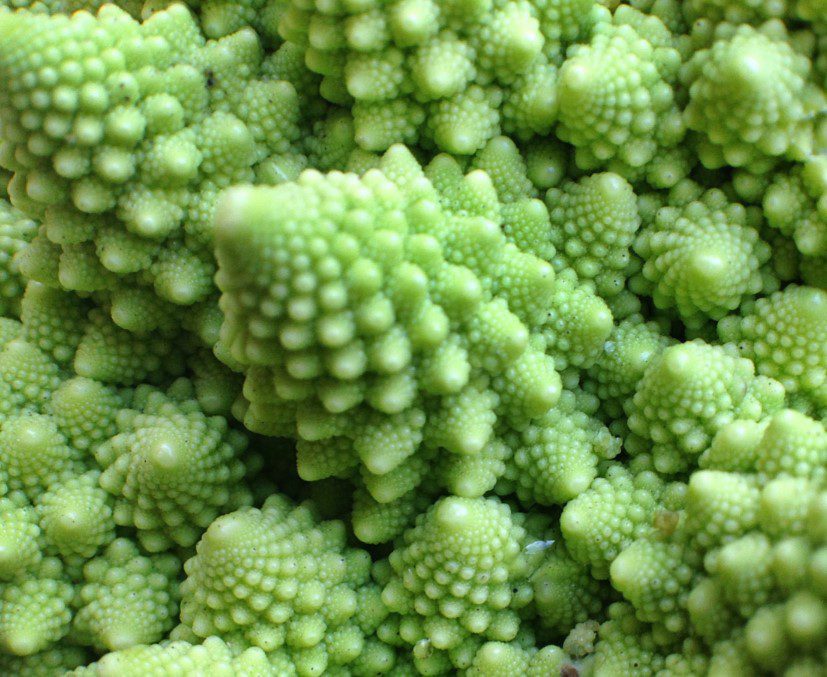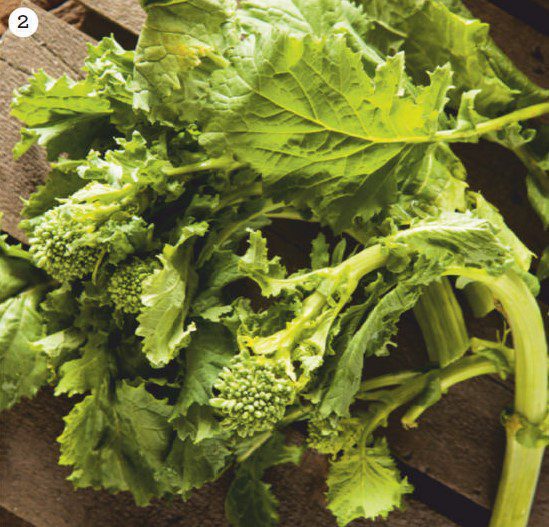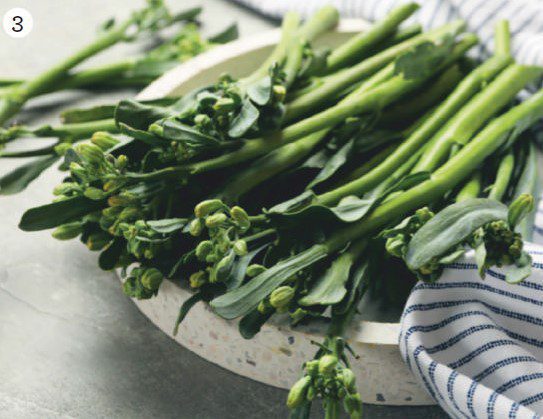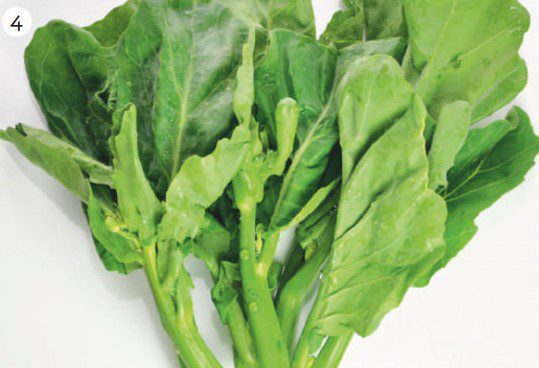Broccoli and 4 Magnificent Friends

Broccoli is often called the healthiest vegetable as it’s packed with nutrients. Rich in vitamin C and high in fiber, it also contains valuable antioxidants and minerals.
The dark-green color of a head of broccoli also indicates that it’s rich in carotenoids.
One of the easiest brassicas to cultivate, broccoli is grown for its buds, forming tightly packed heads.
Not only is it easier to grow than, say, cauliflower or Brussels sprouts, it’s also quicker. Expect to harvest the first head 12–16 weeks after sowing.
There are several traditional broccoli varieties grown for their large green heads. ‘Winter Harvest’ is a variety that thrives in cold months.
The early heads can be 20cm in diameter: enough to feed the entire family. Side shoots appear after the main heads are picked.
Extend the harvest by planting ‘Summer Green,’ which tolerates warmer conditions.
‘Green Dragon’ is compact broccoli.
PLANTING AND CARE
Grow broccoli from seed or seedling. In cool areas, plant out seedlings in autumn.
(seed can be started in summer).
To start from seed, sow in seed trays and plant into the garden as the weather and soil cool. Let seedlings grow to around 7–10cm high before planting them out.
Like all cabbage relatives, broccoli grows best in neutral to slightly alkaline soil. Cater
for this by digging in dolomite or lime while preparing the bed for planting.
The addition of a little lime is essential in areas with highly acidic soil.
(pH 5.5 or less).
Also, dig in compost and manure or organic fertilizer before planting to provide nutrients. Space the seedlings 45–60cm apart to give each plant plenty of room to grow.
Keep plants well-watered, especially as they establish. Every four weeks or so, provide a
side dressing of organic fertilizer such as pelletized chicken manure or blood and bone.
Alternatively, apply an organic liquid feed every two weeks.
TROUBLESHOOTING
Broccoli’s main pest takes the form of a white butterfly known as a cabbage white due to its liking for all cabbage family members.
Expect to see cabbage whites flitting about the vegetable garden, even in winter.
In fact, they’re not just fitting but checking out the vegetable patch for brassicas (including your crop of broccoli) on which to lay their eggs.
Their arrival signifies that it’s time to cover the plants with fine white netting or cloth. To keep the net off the plants, drape it over stakes or hoops.
If the cloth rests on broccoli plants, the clever butterflies may still manage to lay eggs
on the leaves and hatch out some hungry caterpillars.
Cabbage white caterpillars are small and green and hatch from yellow eggs laid on the underside of leaves. The caterpillars are hard to see as they are almost the same color as the leaves.
Look for caterpillars as soon as you notice holes in the leaves as they’ll also attack the heads and ruin the broccoli crop. Squash any you find.
Sadly, my chooks won’t eat these juicy-looking caterpillars. In addition to exclusion netting, nontoxic organic sprays such as Dipel (based on Bt) and spinosad will help control these hard-to-see caterpillars.
Spinosad can also get rid of aphids, another pest that can infest broccoli heads. Alternatively, hose the aphids off.
(Unfortunately, hosing doesn’t remove caterpillars from their host plant as they grip too tightly.)
Clubroot is a disease that affects members of the brassica family, including broccoli.
It is controlled organically by growing plants in alkaline soil (clubroot favors acidic soils) and practicing crop rotation, so brassicas are not grown in the same garden bed for several seasons.
HARVESTING, STORING AND EATING
To harvest, use a knife to remove the entire head, cutting the stem just above a node. This encourages small side shoots to grow and prolongs the harvest.
Always harvest broccoli while the buds are tightly shut and green. The appearance of yellow flowers means the broccoli is over mature.
It may have become woody or developed a strong flavor. Individual flowers can be used as
a garnish but leaving some plants to mature, and the flower provides a nectar source for beneficial insects.
Use heads immediately after picking or store them in a plastic bag in the fridge where they’ll stay fresh for several days.
To freeze, break the main head into small pieces (often called “trees”) and blanch before freezing.
Excess broccoli can also be added to pesto or baked in cakes.
Broccoli is delicious raw and can also be added to smoothies for a nutritious green drink. It can be steamed (the best way to retain its nutrients), stir-fried, sautéed, or roasted.
Although it’s the flower head usually eaten, broccoli stems are also delicious, particularly the slender stems of sprouting broccoli and broccolini.
Large items can be peeled and thinly sliced before being steamed or stir-fried.
Broccoli leaves can also be harvested and cooked, and eaten like spinach.
To retain the bright green color of broccoli, steam the heads quickly until just soft (for five minutes or so), then refresh in cold water.
Studies have shown quick steaming is the most nutritious way to prepare broccoli.
Broccoli and Friends
There’s more to broccoli than the large green heads with thick stems that we see
front and center in the veggie section in the supermarket.
There are also other forms, many crosses (also called hybrids) between broccoli and other brassicas.
1. Broccoflower: Broccoli and cauliflower cross producing dense, bright green
heads like cauliflower heads

2. Broccoli raab, rabe, rapini: A bitter or mustard-flavored green with small, broccoli-like heads, stems, and leaves. Despite its resemblance to broccoli, it’s related to the turnip (Brassica rapa)

3. Broccolini: A cross between broccoli and Chinese broccoli producing small florets with long, thin stems.

4. Chinese broccoli: Also known as gailan (or kai-lan) and served as a leafy vegetable with broad, flat stem.

5. Purple sprouting broccoli: A cut-and-come-again broccoli with purple heads and stems.

6. Romanesco broccoli: A bright, chartreuse-green broccoli resembles a cauliflower with a spiral (or fractal) arrangement of buds.
.






















